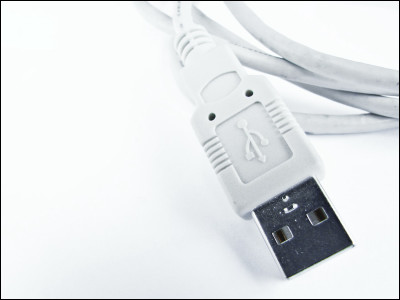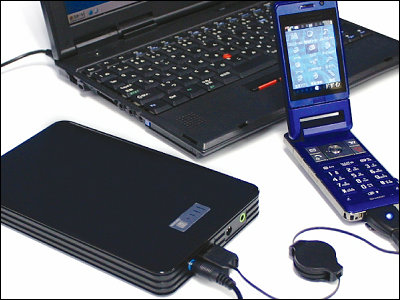What is the reason why many USB hubs continue to have the 'USB 2.0' port, which is a standard more than 10 years ago?

by
More than 10 years have passed since USB3.0 was announced, and in 2019, USB4 with a maximum transfer rate of 40 Gbps was announced . However, even in 2022, many USB hubs equipped with USB 2.0 ports continue to appear. Software engineer Dan explains the question, 'Why are older standard ports still on many USB hubs in 2022?'
Why do USB-C hubs still have USB 2.0 ports? – Dan S. Charlton
https://dancharblog.wordpress.com/2021/08/19/why-do-usb-c-hubs-still-have-usb-2-0-ports/
With the USB standard, if the port shape is the same, old standard terminals can also be connected, so it seems that it is only necessary to prepare a port compatible with the latest standard for the USB hub, but USB hubs released by companies Will often have a USB 2.0 port even in 2022. For example, the following USB hubs that appeared on Amazon.co.jp in 2021 have one USB 3.0 port and one USB 2.0 port.
Amazon.co.jp: USB C hub adapter 5-in-1 GADEBAO multi-port usb hub type-c [4K HDMI output + USB3.0 / 2.0 port + SD & TF card slot installed] thunderbolt 3 compatible type c hub MacBook Pro / Air, Compatible with USB C devices such as ipad Pro, Chrome Book, Dell, Huawei Matebook, Surface Go, etc. Type c hub: PC / peripheral device

USB 2.0 is not suitable for connecting to external storage due to its slow data transfer speed, but if it is a device that does not involve large-capacity data transfer such as a keyboard or mouse, it can be used without problems even if it is connected to USB 2.0. .. For this reason, the explanation that 'USB 2.0 is adopted because of the low mounting cost for products that do not require data transfer speed' holds true.
In addition, Dan states that USB 3.0 and later standards and USB Type-C specifications are also reasons why modern USB hubs have USB 2.0 ports. In the image below, the left side shows the pin layout of the USB3.0 terminal, and the right side shows the pin layout of the USB Type-C. In the standard of USB3.0 or later, data transfer is performed by a technology different from the standard up to USB2.0, but in order to maintain backward compatibility, the terminal of USB3.0 and USB Type-C is also up to USB2.0. It is equipped with pins (D + and D-) for communication technology used in the standard.

According to Mr. Dan, it is possible to communicate with D + and D- while communication is being performed with USB3.0 or later technology. In other words, even while connecting an SD card etc. to a USB hub and performing high-speed data transfer, it is possible to connect to a mouse or keyboard using the extra pins. For this reason, Dan points out that many USB hubs have a USB 2.0 port.
Related Posts:
in Hardware, Posted by log1o_hf







